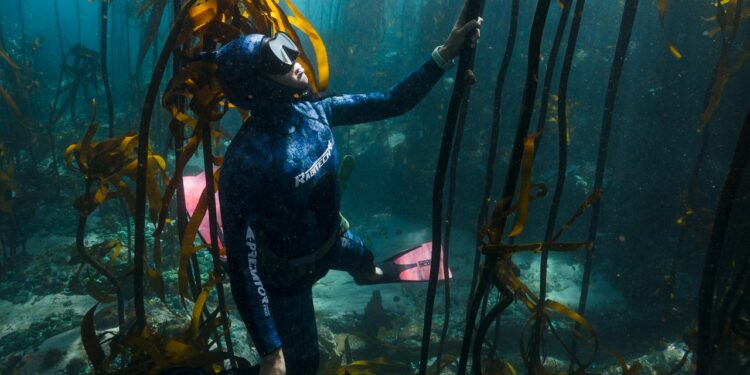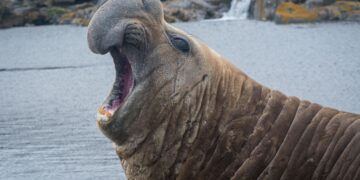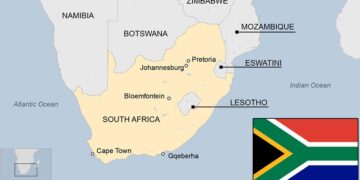What edible treasures can be found foraging along the shores of False Bay?
Exploring the Bounty of False Bay: Diving and Foraging for Wild Food in Cape Town
If you’re looking for an adventure that combines the thrill of diving with the rewarding experience of foraging for wild food, then False Bay in Cape Town is the perfect destination for you. With its rich marine life, clear waters, and abundant wild food resources, False Bay offers a unique opportunity for divers and foragers alike to explore the bounties of the ocean and the shore.
Diving in False Bay
False Bay is home to an incredible diversity of marine life, making it a popular destination for diving enthusiasts. From colorful reef fish to majestic kelp forests, the waters of False Bay are teeming with life waiting to be discovered. Divers can explore the underwater world and encounter a wide range of marine species, including sharks, rays, seals, and even the occasional whale.
For those interested in spearfishing, False Bay offers ample opportunities to hunt for a variety of fish species. However, it’s important to note that spearfishing regulations and restrictions apply, and divers should always be mindful of sustainable harvesting practices.
Foraging for Wild Food
In addition to its thriving marine ecosystem, False Bay also offers a wealth of wild food resources along its coastline. Foragers can explore the shores and tidal pools to discover a variety of edible treasures, including seaweed, mussels, limpets, and sea urchins. For those with a keen eye and a taste for adventure, foraging for wild food in False Bay can be an incredibly rewarding experience.
Benefits and Practical Tips
Exploring the bounty of False Bay through diving and foraging offers a range of benefits, including the opportunity to connect with nature, source sustainable, local food, and experience the thrill of adventure. However, it’s important to approach this activity with respect for the environment and a commitment to sustainable practices. Here are some practical tips for divers and foragers exploring False Bay:
– Always respect local regulations and restrictions related to diving, spearfishing, and foraging.
– Practice sustainable harvesting by only taking what you need and leaving the rest for future generations.
– Be mindful of the impact of your activities on the marine environment and strive to minimize your footprint.
– Seek out local guides or experts who can provide valuable insight and guidance for safe and responsible diving and foraging.
Case Studies and First-hand Experience
To provide a deeper understanding of the unique experience of exploring False Bay, here are a few case studies and first-hand experiences from divers and foragers who have ventured into this vibrant ecosystem:
– James, an experienced diver, describes his exhilarating encounters with sharks and other marine life while exploring the kelp forests of False Bay.
– Sarah, a passionate forager, shares her delight in discovering a variety of edible seaweed and shellfish along the rocky coastline of False Bay.
Through these case studies, we gain insight into the diverse experiences and opportunities that await those who are drawn to the waters of False Bay.
Exploring the bounty of False Bay through diving and foraging offers a captivating blend of adventure, discovery, and sustainable living. With its rich marine life and abundant wild food resources, False Bay is a treasure trove waiting to be explored. By approaching this experience with respect for the environment and a commitment to sustainable practices, divers and foragers can immerse themselves in the wonders of this unique ecosystem and create lasting memories of their time spent in Cape Town’s bountiful waters.
Discover the Unseen Bounty of Cape Town’s False Bay
Roushanna Gray, a renowned forager and leader in sustainable living, stands at the edge of False Bay in Cape Town, surveying the majestic kelp forests below. She observes that most people suffer from “seaweed blindness,” unable to distinguish the abundance of edible seaweed species available. With over nine hundred edible species and only one inedible variety, these underwater landscapes hold a wealth of nourishment for both humans and the earth.
Contrary to typical winter weather, it is a beautiful day for coastal activities in South Africa. Following a recent diving expedition along the country’s eastern coastline to witness the captivating sardine run, I shifted gears to embark on an unconventional adventure: a full-day coastal foraging workshop with Gray’s company, Veld & Sea.
Gray resides at the southern tip of Cape Peninsula—the very same locale featured in the Academy Award-winning documentary “My Octopus Teacher” (2020). Here she leads excursions focused on harvesting wild food such as sea snails, mussels, and seaweed from what she describes as an ”edible landscape.” These immersive experiences guide participants through tidal pools, kelp forests, and sun-drenched fynbos—indigenous shrubbery abundant in this region—to gather ingredients that will later be used to create flavorful dishes steeped in heritage and history.
According to Gray, foraging involves actively seeking out and gathering wild sustenance—a practice ingrained in human existence throughout history. Veld & Sea tours serve as opportunities for individuals to reconnect with ancestral wisdom while fostering stewardship and appreciation for nature. Through these experiences, participants rekindle their relationship with nature by understanding where their food comes from.
Our day begins bright and early at Smitswinkel Bay—an isolated site accessible only by navigating a winding dirt trail cutting through dense vegetation before descending down a cliffside. Serendipitously joined by surfer Koa Smith and filmmaker Sam Potter—documenting Gray’s story for his series “Back to the Wild”—we venture through lush foliage until we reach water’s edge where kelp heads gently bob atop ocean waves. The air is refreshingly crisp; spread out before us is False Bay—a vast expanse of cerulean blue waters.
Foraging proves seasonal; during spring tides when lower water levels consistently reveal ample intertidal zones ideal for harvesting. Nutrient content fluctuates alongside lunar cycles—one example being sea lettuce rich in vitamin C during summer but abundant with vitamin D come winter months.
Equipped simply with scissors and mesh bags,
Gray leads us into shallow waters demonstrating how diverse types of algae can be collected along rocky shorelines: slippery orbit (a wide slick sheet); wrack (dense long branches); purple laver (delicately thin violet), dead-man’s fingers containing swollen stems entailing mucus-like substance; tongue-weed characterized by its tough texture resembling tongues known carrageenan adding natural thickener properties.
Capture Glimpses into otherworldly beauty witnessed within aptly-named Dead Man’s Fingers
An area rich with life awaits those who explore The Cape Point Nature Reserve
An awe-inspiring sight near Cape Point Nature Reserve—a place blessed with extraordinary nature
As we immerse ourselves deeper into this journey exploring newfound connections between land beneath our feet reaching down beneath.













